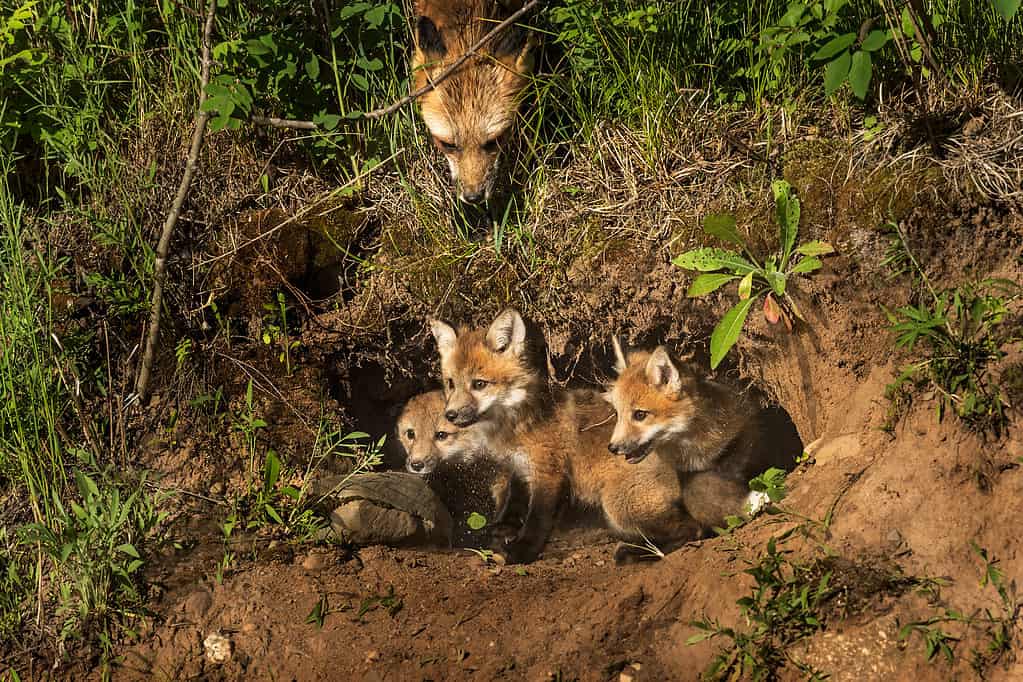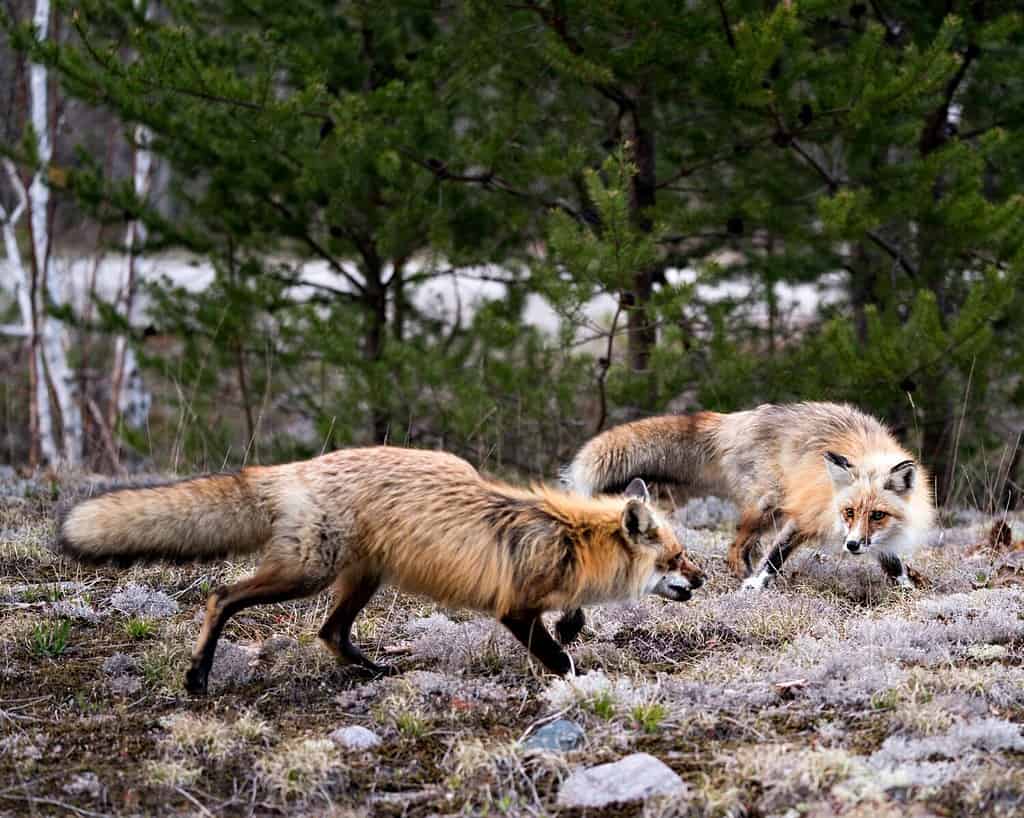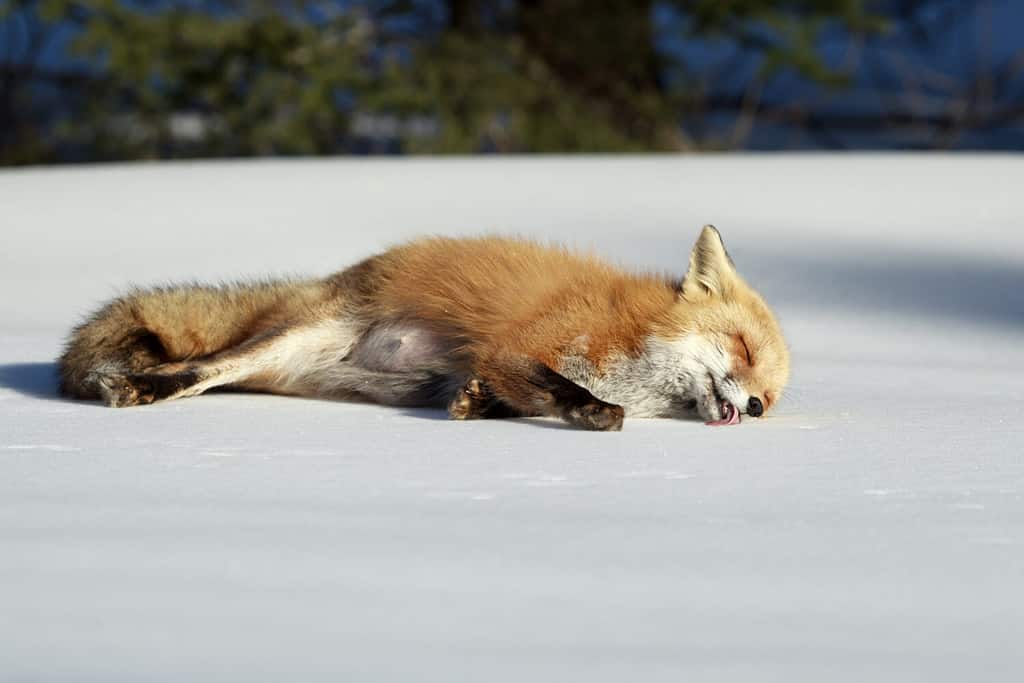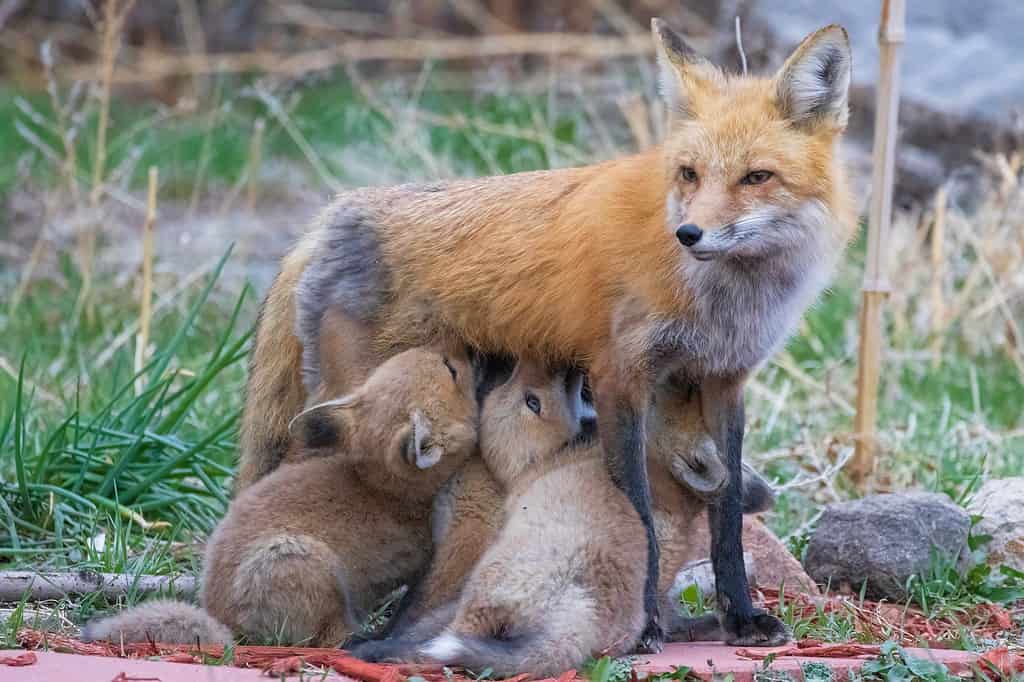The exact timeline on when foxes have babies does depend on the area and the species. Foxes are typically born between February and April.
Most foxes mate in the winter months of December through February. Then, the female has a gestation period of 52 days. After that, she gives birth to 1 to 6 pups or kits. This puts most pups being born in the early spring months.
However, there are about 12 species of fox in the world, and they all have different mating patterns. Therefore, not all fox pups may be born at this time. Most foxes are monogamous, though, which means they mate for life.
Below, we’ll closely examine when most foxes mate and give birth. We’ll also discuss the early life of fox pups, including where they are born.

Foxes are typically born between February and April.
©Geoffrey Kuchera/Shutterstock.com
Fox Mating Season
Most fox species mate in the early winter months of December through February. Foxes mate for life, so they don’t have to do much work to mate after finding a partner. However, foxes may participate in polygamy or promiscuity, especially when the population is very dense.
Still, this doesn’t tend to affect exactly when the foxes mate.
Foxes will give birth each year, usually after they reach sexual maturity and find a mate. The vixen (female fox) becomes receptive to mating one to six days during the mating season. This is a very small window of time. The tod (male fox) will guard and follow her everywhere during this period.
If any males approach the vixen, he will fight them off. The actual mating process can be quite noisy and uncomfortable for foxes, so they may be heard screaming or making a ruckus from far away. However, these screams may be how the foxes communicate during the process.

Foxes mate for life, so they don’t have to do much
workto mate after finding a partner.
©Rejean Aline Bedard/Shutterstock.com
The Gestation Period
After mating, the vixen will stay pregnant for just under two months. She will start looking for a suitable den to give birth in and raise her young. These dens are called “natal dens.” The fox won’t live in the same den all the time; a new one is made each year only for their babies.
Usually, this den is an underground burrow that protects the family from predators and the weather. The vixen may dig her den or use an abandoned one that was created by another animal.
The vixen will line the den with grass, fur, and other nesting materials. She will also eat more than usual to increase her fat stores for nursing.
The fox’s average gestation period is about 52 days. However, it can vary slightly (just like a human’s).

The fox’s average gestation period is about 52 days.
©Christopher MacDonald/Shutterstock.com
The Birth of the Pups
Once spring rolls around, the female will give birth to 1 to 6 pups in the spring. Usually, this is between the very end of February and early May. The number of pups depends on several factors, including the species, the age of the mother, and the availability of food.
The pups are born blind, deaf, and completely defenseless. Their eyes don’t open for 10 to 15 days, but they cannot see very well even then.
The pups must rely on their mother for food, which comes from milk. The vixen nurses the pups until they are about four weeks old. At this point, the pups will start to each solid foods caught by the parents.
The father’s main job is to bring food to the den and guard it from predators. The female stays with the pups most of the time.

The pups must rely on their mother for food, which comes from milk.
©BlueBarronPhoto/Shutterstock.com
The Dispersal of the Pups
The pups stay with the parents for six to nine months, though this can vary from location and species. During this time, the pups learn everything they need to survive in their environment, including hunting, avoiding predators, and defending against other foxes.
Often, the foxes will bond with others in their group.
However, the babies will slowly become more independent. After a few months, they will face the decision of leaving or staying in their home range. Foxes tend to disperse when they reach sexual maturity – or even before then. But, some foxes will disperse earlier or later than this.
Dispersal rarely occurs before the fox is 26 weeks old. However, some foxes may wait until they are over a year old to disperse. We don’t know exactly why some foxes leave earlier than others, it may depend on the availability of resources.
Dispersal is a dangerous business for a fox. They are faced with unfamiliar terrain, predators, and being completely alone. Foxes will attempt to mate after dispersing, which can reduce the risk. However, this takes some time, and the fox must survive alone in the meantime.
Foxes may settle very close to their parents, or they may travel miles away.
Males tend to leave their natal home range earlier than females. We don’t know exactly why this is. It may be a natural mechanism to reduce inbreeding.
Females tend to stay rather close to their home range. They may even stay within it if there are enough resources to support them. Sometimes, the females within a short distance will cooperate and support each other.
However, sex-based dispersal isn’t a fixed rule for foxes. Studies have found that sometimes females are more likely to disperse than males, or it may be completely random.
The photo featured at the top of this post is © iStock.com/slowmotiongli
Thank you for reading! Have some feedback for us? Contact the AZ Animals editorial team.







